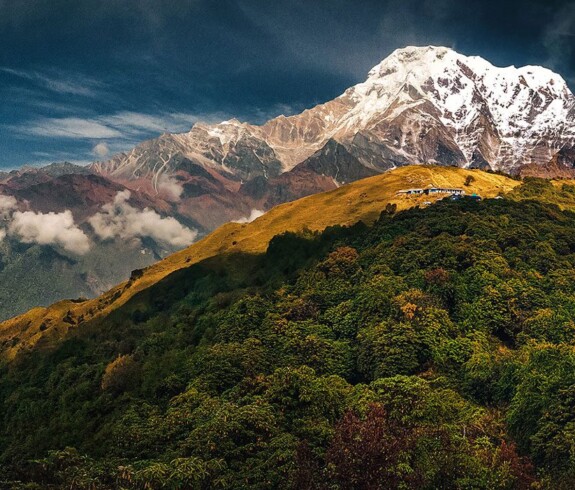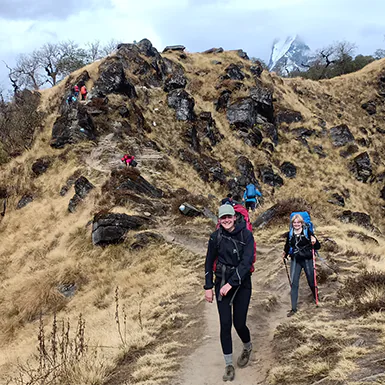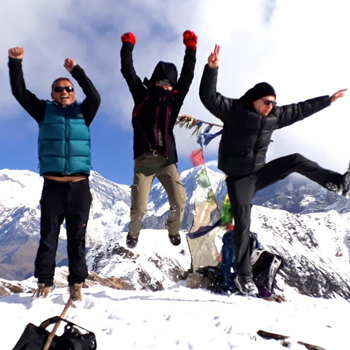Mardi Himal offers a peaceful alternative to busier routes. The region’s natural and cultural highlights create an unforgettable trekking experience. Focus on planning and considering the Mardi Himal Trek Cost when organizing permits, gear, and lodging. A balanced budget and sensible preparation ensure a rewarding and stress-free adventure.
Introduction to Mardi Himal Trek
Mardi Himal lies in the Annapurna region of Nepal. Its less-crowded trails attract trekkers seeking natural beauty without large crowds. The area features panoramic Machhapuchhre (Fishtail) views and other majestic peaks. Many travelers love its peaceful charm and cozy teahouses.
Location in the Annapurna Region
The trek begins near Pokhara, a scenic city gateway to multiple routes. The trail winds through lush forests, steep climbs, and quiet ridges. Clear skies often grant memorable sunrise and sunset views of the Himalayas. Local villages add a cultural element for those curious about traditional lifestyles.
General Appeal of Its Off-the-Beaten-Path Experience
Fewer travelers venture here, so the route feels more personal. Spending time with local families and exploring hidden trails creates a more profound connection. The area’s biodiversity adds even more excitement, with birds and rare plants along the way.
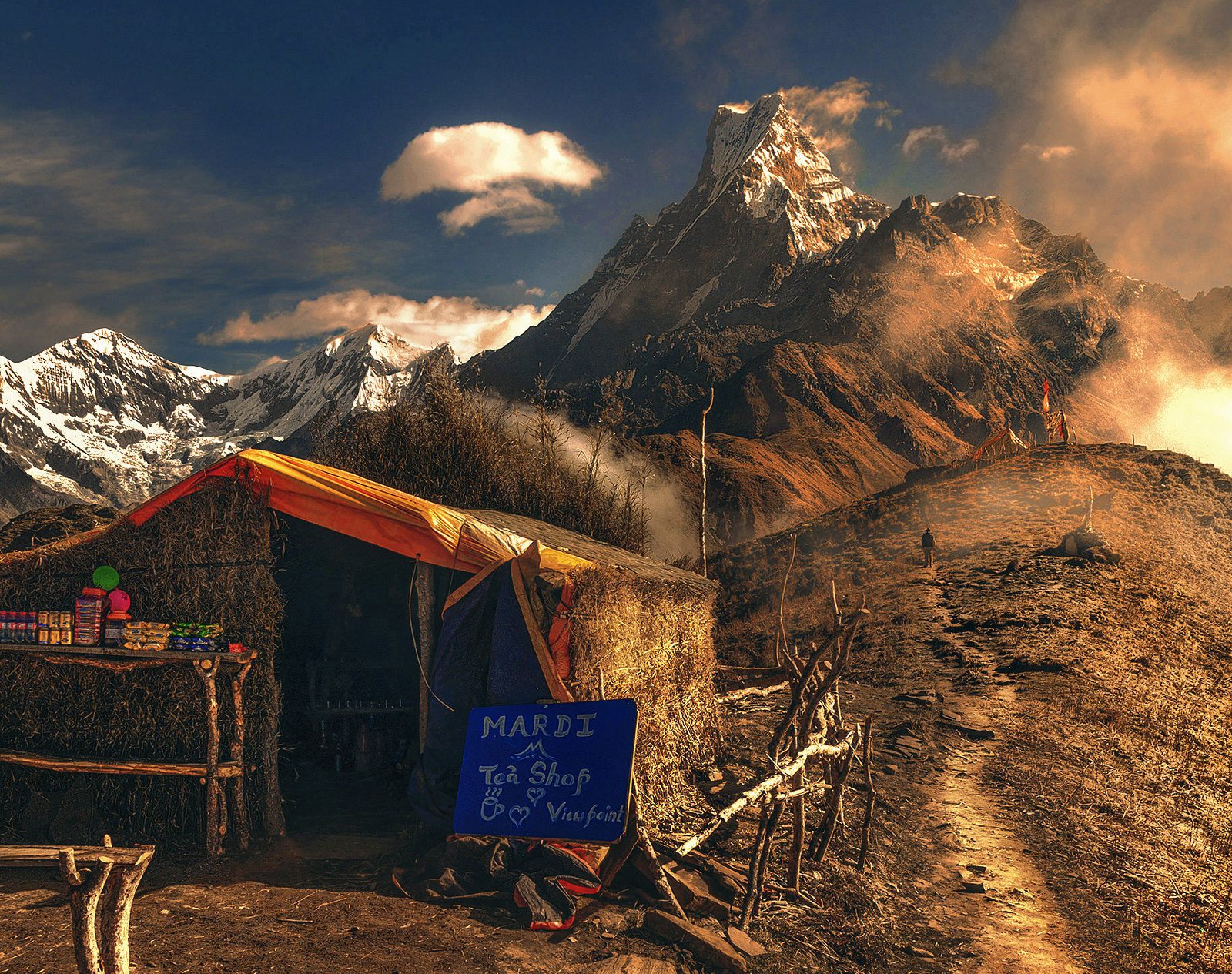
Food and Drink Budget for Mardi Himal Trek
Managing food and drink costs is essential when calculating the overall Mardi Himal Trek Cost. While the trek offers many dining options, prices vary depending on altitude and season.
Average Cost for Breakfast, Lunch, and Dinner
Teahouses and lodges serve simple yet nutritious meals on the Mardi Himal Trek. The average cost for meals is as follows:
- Breakfast: NPR 500–800 per meal, including eggs, pancakes, and porridge.
- Lunch and Dinner: NPR 800–1200 per meal. Popular choices include dal bhat (rice and lentils), noodles, or fried rice.
Most trekkers prefer dal bhat for its unlimited servings, making it a budget-friendly and energy-packed option. Prices rise slightly as you go higher in altitude due to transportation challenges.
Importance of Carrying Snacks
Carrying snacks can reduce costs and increase energy levels during the trek. Pack lightweight and nutritious items like nuts, energy bars, chocolates, or dried fruits. Buying snacks along the trail is possible but often more expensive. A small supply from Kathmandu or Pokhara helps manage your expenses better.
How Costs Change with Altitude
As you ascend, food and drink prices increase. This is due to the difficulty of transporting supplies to higher altitudes. For example, a bottle of water costing NPR 30 in Pokhara might cost NPR 100–300 at higher elevations. Similarly, an essential meal can cost up to NPR 1,000 in the highest teahouses. Budgeting for these price differences is crucial to ensure you have enough funds throughout the trek.
Tips for Managing Your Food and Drink Budget
- Stick to local dishes like dal bhat, which are filling and affordable.
- Using a reusable water bottle and purification tablets.
- Bring your preferred snacks from cities to save on trail costs.
By carefully planning your food and drink budget, you can manage the Mardi Himal Trek Cost without compromising comfort or nutrition. Smart choices ensure you stay energized throughout your trekking adventure.
Transportation Costs for Mardi Himal Trek
Transportation costs are significant expenses and play a vital role in the Mardi Himal Trek cost. The trek starts from Kande or Phedi, which is easily accessible from Pokhara. You can choose from buses, jeeps, or flights depending on your budget and preferences.
From Kathmandu to Pokhara
Most trekkers begin by traveling from Kathmandu to Pokhara. There are several options to fit different budgets:
- Tourist Bus: A tourist bus is affordable, costing between NPR 1200 and NPR 2500 per person. The trip takes about 8-9 hours.
- Flight: A 30-minute flight from Kathmandu to Pokhara costs approximately USD 100 to USD 120. Flights save time but add to the overall Mardi Himal Trek Cost.
- Private Vehicle: Private cars or jeeps provide more comfort and flexibility. Expect to pay NPR 16,000–20,000 depending on the vehicle size and distance.
Airport Transfers in Kathmandu and Pokhara
For those flying, airport transfers also add to the costs. Taxis from Tribhuvan International Airport to central Kathmandu cost NPR 700–1,000. In Pokhara, a taxi from the airport to the city center typically costs NPR 700–1000. Factor these expenses into your transportation budget.
From Pokhara to the Starting Point
- Local Bus: Local buses to Kande or Phedi cost NPR 150–300. These buses are economical but may be crowded.
- Private Jeep: A private jeep from Pokhara to the starting point costs NPR 3,000–6,000. Splitting the cost with fellow trekkers makes it more affordable.
Return Trip Details and Costs
After completing the trek, you’ll need transportation back to Pokhara. Local buses remain the cheapest option, while private jeeps provide comfort for a higher fee. During peak trekking seasons, prices may rise, so plan to avoid surprises.
Key Tips to Save on Transportation
- Book tourist buses and flights early to secure lower fares.
- Share private vehicles with other trekkers to reduce individual expenses.
- Keep enough cash for unexpected transport needs during the trek.
By understanding these options, you can plan your transportation budget effectively. Thoughtful planning ensures the Mardi Himal Trek Cost stays manageable and stress-free.
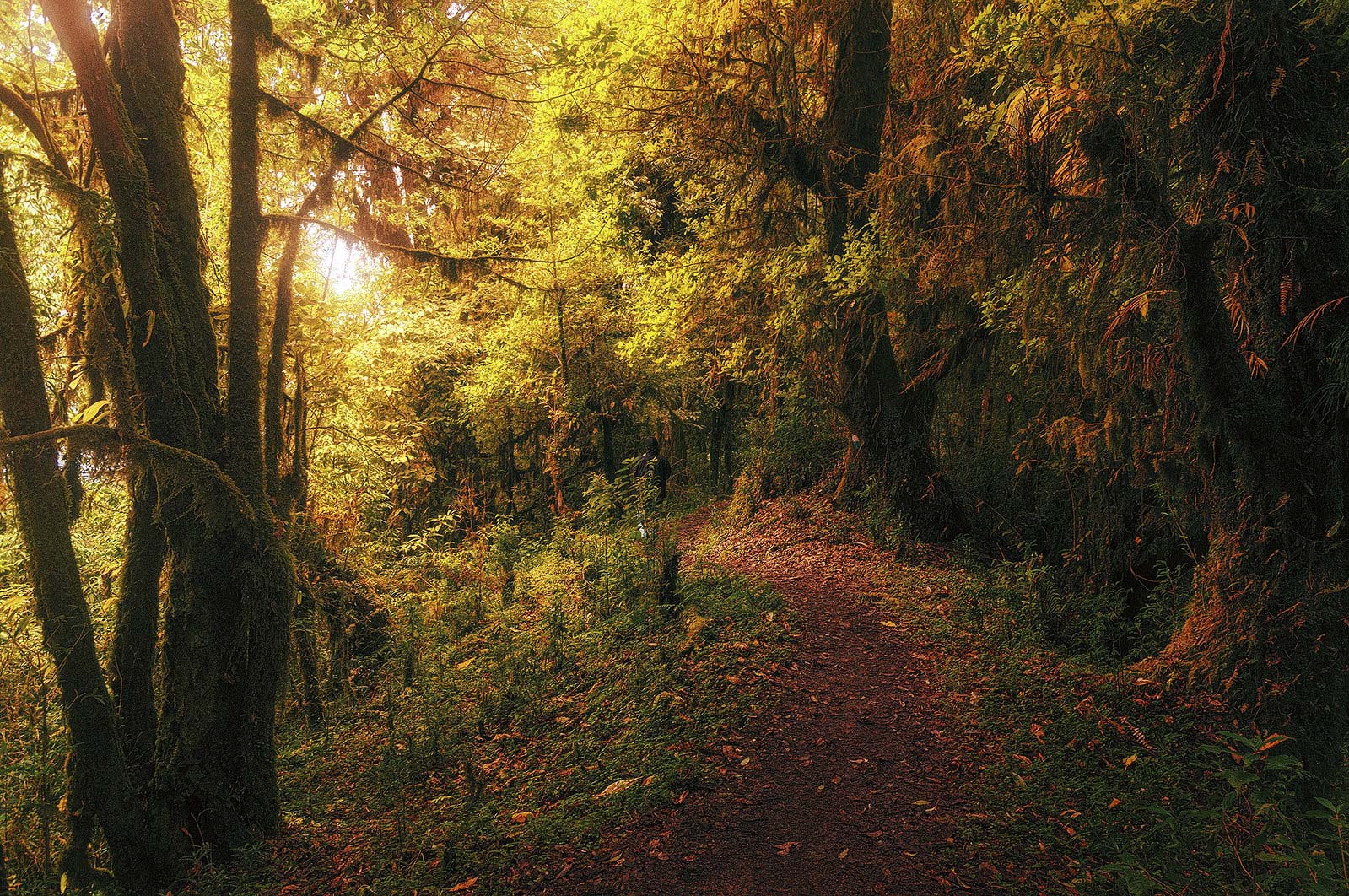
Accommodation Expenses for Mardi Himal Trek
Accommodation is a significant part of the overall Mardi Himal Trek Cost. From basic teahouses on the trail to comfortable hotels in Kathmandu and Pokhara, options are available for every budget. Understanding these costs helps you plan effectively.
Typical Teahouse or Lodge Costs per Night
The most common accommodations are on the Mardi Himal Trek, teahouses, and lodges. They offer basic rooms with shared bathrooms and simple amenities. Altitude and the time of year influence nightly accommodation costs, typically ranging from NPR 1000 to NPR 2,000. Some teahouses provide meals as part of a package deal, which can help manage expenses.
Availability and Pricing During Peak Seasons
Teahouse availability becomes limited during the peak trekking seasons (spring and autumn). Prices may also increase due to higher demand. It’s advisable to start your trek early in the day to secure a room, especially at higher altitudes. In the off-season, costs are lower, and accommodations are easier to find.
Considerations for Advance Bookings
Booking accommodations in advance is rare on the Mardi Himal Trek, as teahouses operate on a first-come, first-served basis. However, pre-arranging a guide through a trekking agency in peak seasons can ensure your accommodation is reserved. This approach adds convenience but slightly increases your overall Mardi Himal Trek Cost.
Accommodation in Kathmandu and Pokhara
Before and after the trek, you will likely stay in Kathmandu and Pokhara. Accommodation options in these cities vary widely:
- Standard Lodge: Starts at USD 15 per night. Ideal for budget travelers.
- 3-Star Hotels: Prices begin at USD 50 per night, offering comfortable rooms with standard amenities.
- 4-Star Hotels: Rates start from USD 100 per night, featuring more luxurious services and facilities.
- 5-Star Hotels: Premium stays cost USD 200 or more per night, providing top-tier comfort and services.
Tips to Save on Accommodation Costs
- Choose teahouses offering meal packages for better value.
- Travel during the off-season for lower rates and easier availability.
- In Kathmandu and Pokhara, compare online deals for discounts on hotels.
By understanding the costs and options for accommodation, you can manage your budget effectively. Proper planning ensures the Mardi Himal Trek Cost remains reasonable while providing a comfortable trekking experience.
How Mardi Himal Trek Cost Affects Planning
Mardi Himal Trek Cost varies based on the time of year, choice of transportation, and trekking style. Food and lodging expenses can shift due to seasons and altitude. Guides and porters may cost extra but offer valuable help in challenging conditions. When planning your budget, remember to account for permit fees, including the ACAP and TIMS. Planning prevents sudden financial strain.
Practical Tips for Budgeting
- Research Accommodation: Teahouses range from basic to more comfortable options. Early booking can secure better rates.
- Plan for Food Costs: Prices go up with altitude. Eating local meals often reduces total spending.
- Check Permit Requirements: Buying permits in Pokhara or Kathmandu saves time.
- Hire Local Help Wisely: A skilled guide adds cultural insights and safety. Porters lighten the load and let you enjoy the trek more.
- Set Aside Extra Funds: You might need extra for snacks, Wi-Fi, or unforeseen situations.
Permit Fees and Regulations
Proper permits ensure a legal and safe trek. These fees contribute to conservation efforts and regulate trekking activities. Understanding each permit type helps you manage the overall Mardi Himal Trek Cost more effectively.
TIMS Card
The Trekking Information Management System (TIMS) card is mandatory for all foreign trekkers. The Nepal Tourism Board has offices in Kathmandu and Pokhara, where you can acquire this card. Independent trekkers pay around NPR 2,000, while group trekkers pay around NPR 1,000 per person. If you join a licensed trekking agency, they often handle the application.
ACAP Entry Permit
Annapurna Conservation Area Permit (ACAP) is another crucial requirement. It supports environmental preservation across the Annapurna region. Foreign nationals usually pay NPR 3,000 for the ACAP entry permit. SAARC nationals pay a lower fee, and Nepali citizens pay a minimal amount. The permit is also available from the Nepal Tourism Board offices or designated checkpoints.
Where and How to Obtain These Permits
You can acquire both permits at official counters in Kathmandu or Pokhara. Bring passport-size photos and your passport to complete the registration. Arrive with enough Nepalese rupees to cover the fees. The process is usually straightforward; staff members guide you through the form-filling steps.
Cost Breakdown and Impact on Mardi Himal Trek Cost
These permit fees form part of your overall Mardi Himal Trek Cost. Allocate a clear budget for the TIMS card and ACAP entry to avoid last-minute surprises. Keep your permits handy during the trek because you may need to show them at checkpoints. Proper paperwork keeps your trek smooth and problem-free.
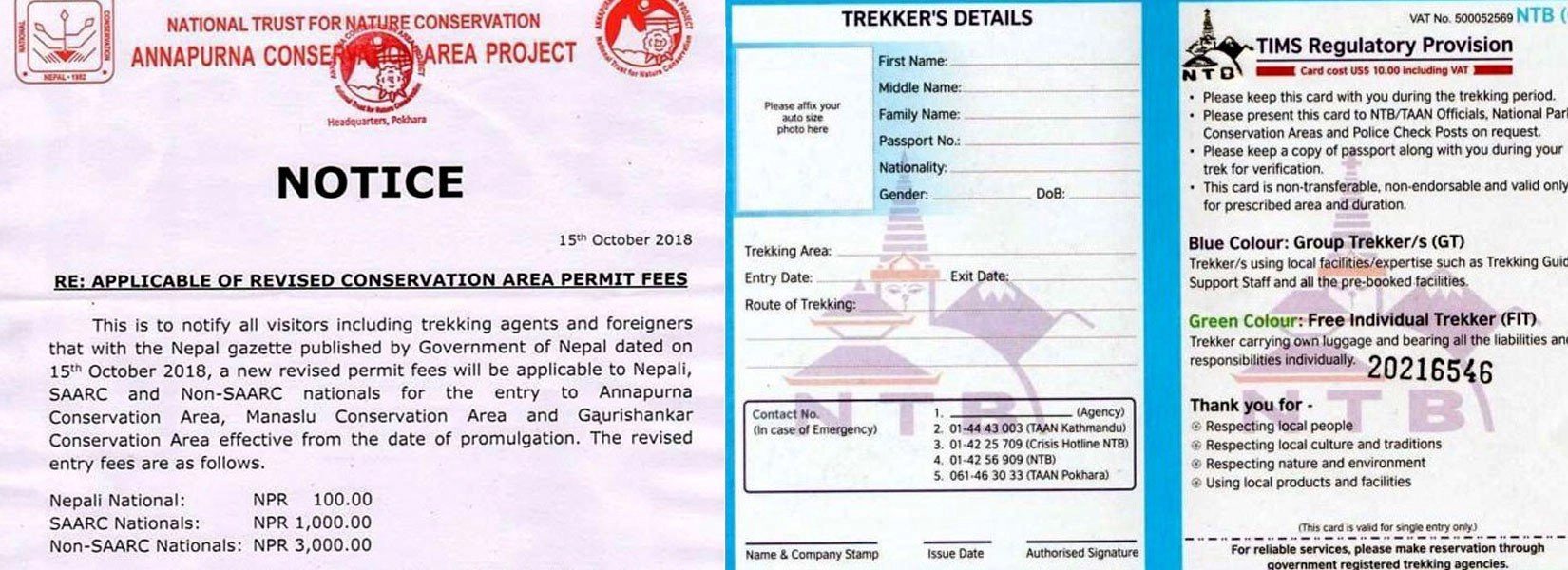
Guide and Porter Fees for Mardi Himal Trek
A guide or porter can enrich your trekking experience, and their employment is a widely adopted practice. Understanding their fees and contributions can help you budget effectively and manage the overall Mardi Himal Trek Cost.
Daily Rates for Guides and Porters
- Professional Guide: Hiring a guide costs approximately USD 35 per day. Guides offer valuable local knowledge, assist with navigation, and ensure your safety throughout the trek.
- Porter: Porters charge around USD 20 per day. Carrying your heavy belongings enables you to trek more quickly and fully appreciate the experience.
These rates can vary slightly based on the trekking season and demand.
Benefits of Hiring Local Support
- Enhanced Safety: Guides are familiar with the trail, weather patterns, and emergency protocols.
- Cultural Insights: Local guides share stories about the area’s history, traditions, and natural beauty, adding depth to your trek.
- Physical Comfort: Porters carry heavy loads, reducing the risk of fatigue or injury for trekkers.
- Community Support: Hiring locals helps boost the regional economy and supports sustainable tourism.
Tipping Suggestions
While tipping is not mandatory, it is appreciated as a gesture of gratitude for their hard work. The recommended tipping range is USD 10–15 per day for guides and USD 5–10 per day for porters. Adjust based on their service quality and your overall budget.
Tips for Managing Guide and Porter Costs
- Share a guide or porter with other trekkers to reduce individual expenses.
- Hire licensed professionals through reputable trekking agencies for reliability.
- Plan your tipping to avoid last-minute confusion.
Including guides and porters in your plan elevates your trekking experience and ensures the Mardi Himal Trek Cost is well-utilized. Their support can turn a challenging trek into a smooth and enjoyable adventure.
Trekking Gear Costs for Mardi Himal Trek
Proper trekking gear ensures safety and comfort on the Mardi Himal Trek. Balancing quality with cost is crucial to managing the overall Mardi Himal Trek Cost. Below, we explore options for renting or purchasing gear, essential items, and tips for cost-effective upgrades.
Rental vs. Purchase Costs for Gear in Kathmandu or Pokhara
Kathmandu and Pokhara are popular hubs for renting or purchasing trekking gear. Renting is ideal for those trekking occasionally while purchasing suits regular trekkers.
- Rental Costs:
- Hiking boots: USD 2–3 per day
- Down jacket: USD 1.5–3 per day
- Trekking poles: USD 1–2 per day
- Sleeping bags: USD 2–4 per day
- Purchase Costs:
- Quality hiking boots: USD 50–200
- Down jacket: USD 80–250
- Trekking poles: USD 20–50
- Sleeping bags: USD 50–150
Renting saves costs if you only trek occasionally, but ensure the gear is in good condition before renting.
Essential Items for Mardi Himal Trek
- Hiking Boots: Comfortable, waterproof boots with good ankle support are necessary.
- Down Jacket: Necessary for warmth at higher altitudes.
- Trekking Poles: Helpful for stability on uneven or steep trails.
- Backpack: A sturdy pack of 30–50 liters to carry essentials.
- Sleeping Bag: Rated for temperatures below freezing, especially during peak seasons.
- Layers and Accessories: Thermal layers, gloves, a beanie, and sunglasses are essential for weather protection.
Budget Tips for Gear Upgrades
- Shop Locally: Kathmandu and Pokhara offer affordable gear, including second-hand options.
- Look for Sales: Off-season discounts help reduce costs.
- Rent Expensive Items: Renting can save money for sleeping bags and jackets.
- Borrow from Friends: If you have trekking friends, consider borrowing gear to minimize expenses.
- Invest in Key Items: Spend on high-quality boots and a backpack, which most impact comfort and safety.
Selecting the right gear and managing its cost is crucial for a successful trek. Whether renting or purchasing, planning your expenses carefully ensures the Mardi Himal Trek Cost stays within budget. Equipped with the right items, you can enjoy a safe and comfortable trekking experience.
Travel Insurance for Mardi Himal Trek
Travel insurance is essential to your trekking plan and directly influences the overall Mardi Himal Trek Cost. It ensures safety and financial protection during unexpected situations, especially at high altitudes.
Importance of Coverage for High-Altitude Trekking
High-altitude treks like Mardi Himal involve unique risks, including altitude sickness, injuries, or adverse weather conditions. A good travel insurance policy provides peace of mind by covering medical emergencies and other potential issues. Without proper insurance, unexpected incidents can lead to high out-of-pocket expenses.
Approximate Cost of Travel Insurance
Travel insurance for high-altitude trekking typically costs between USD 50 and USD 150, depending on the policy’s coverage and duration. Insurers often consider factors like age, health conditions, and the trek’s maximum altitude. Choose a policy that explicitly covers trekking above 4,000 meters, as some standard plans exclude high-altitude activities.
Medical and Evacuation Coverage Details
A comprehensive policy should include:
- Medical Expenses: Covers treatment costs for injuries or illnesses sustained during the trek.
- Emergency Evacuation: Helicopter evacuation costs for severe cases, such as acute mountain sickness (AMS). This can be expensive without insurance, costing USD 3,000 or more.
- Repatriation: Includes costs for returning to your home country in case of serious medical emergencies.
- Trip Cancellation or Delay: Reimbursement for prepaid expenses like flights or accommodations if your trek is interrupted.
Tips for Choosing the Right Insurance
- Check Altitude Limits: Ensure the policy covers trekking up to Mardi Himal’s highest points (over 4,000 meters).
- Read the Fine Print: Confirm that helicopter evacuations and medical expenses are explicitly included.
- Purchase Early: Get insurance when you finalize your trek to cover potential trip cancellations.
- Compare Policies: Use online tools or consult trekking agencies for recommendations.
Purchasing travel insurance is a prudent step to safeguard your health and finances on your trek. Though it adds to the Mardi Himal Trek Cost, it provides invaluable security for unexpected challenges. Proper coverage allows you to enjoy the trek without worrying about unforeseen expenses.
Additional Costs to Consider for Mardi Himal Trek
While planning for the Mardi Himal Trek Cost, it’s essential to include additional expenses that may arise during the trek. These costs, though small individually, can add up significantly.
Extra Snacks or Drinks
Snacks and drinks are readily available along the trekking route, but they come at a premium, especially at higher altitudes. A bar of chocolate or a packet of biscuits may cost NPR 100–300, while bottled water can range from NPR 30 in Pokhara to NPR 300 at higher elevations. Carrying your snacks, such as energy bars or dried fruits, reduces costs. Bringing a reusable water bottle with a purification system also saves money and reduces plastic waste.
Charging Electronics and Wi-Fi Fees
Charging electronics like phones, cameras, and power banks is not free on the trail. Teahouses charge NPR 100–500 per hour, depending on the altitude. Similarly, accessing Wi-Fi costs NPR 300–500 per hour at higher points. Bring spare batteries, a fully charged power bank, or a solar charger to save money. Download offline maps or use local SIM cards with data packages before the trek for connectivity.
Souvenirs and Tips for Local StaffPurchasing souvenirs like handmade crafts, jewelry, or prayer flags are a great way to support the local economy. Prices vary, but budget NPR 1,000–5,000 for small mementos. Tipping guides, porters, and teahouse staff is a customary practice. A general guideline is USD 10–15 per day for guides and USD 5–10 per day for porters. Expressing gratitude through tipping enhances the relationship with your support team.
Tips to Manage Additional Costs
- Plan for Extras: Allocate a buffer of USD 50–100 for unplanned expenses.
- Bring Essentials: Carry snacks and gear like power banks to avoid unnecessary spending.
- Negotiate: Politely negotiate the price for souvenirs, especially when buying multiple items.
These additional expenses may seem minor but can impact the overall Mardi Himal Trek Cost. Planning for snacks, electronics, and tipping ensures a smoother experience while respecting local customs. Budgeting for these costs lets you thoroughly enjoy the trek without financial stress.
Cost-Saving Strategies for Mardi Himal Trek
Planning carefully can help reduce the Mardi Himal Trek Cost while ensuring a fulfilling trekking experience. Here are practical strategies to save money on this beautiful trek.
Off-Season Trekking: Pros and ConsTrekking during the off-season, such as monsoon (June–August) or winter (December–February), can significantly lower costs.
Pros:
- Accommodation and transport prices drop due to fewer trekkers.
- Teahouses are less crowded, offering more personalized service.
- The trails are peaceful, providing a serene trekking experience.
Cons:
- Monsoon season brings rain, leeches, and slippery trails.
- Winter treks involve cold temperatures and possible snow-blocked paths.
- Limited amenities may be available in some areas.
Choose the off-season only if you are prepared for these challenges and prioritize cost savings over convenience.
Sharing Transport and Guides with Other Trekkers
One of the easiest ways to lower expenses is by sharing costs with fellow trekkers.
- Transport: Splitting the cost of private jeeps or taxis significantly reduces individual expenses. For example, a USD 50 private jeep ride becomes affordable when divided among 4–6 trekkers.
- Guides and Porters: Hiring one guide or porter for a small group minimizes costs while maintaining safety and support.
Look for trekking partners in Pokhara or through online forums before starting the trek.
Negotiation Tips for Accommodations
Negotiating prices at teahouses can help lower your accommodation expenses.
- Stay Flexible: Offer to eat meals at the same teahouse where you sleep. Many teahouses reduce room rates if you dine with them.
- Travel Off-Season: During less busy periods, teahouses are more likely to offer discounts.
- Be Polite: Approach negotiations respectfully, as building rapport can lead to better deals.
Additional Tips for Saving Costs
- Bring Essentials: Carry reusable water bottles, purification tablets, and snacks to avoid expensive purchases on the trail.
- Book in Advance: Book cheaper rates for flights or buses by booking early.
- Use Local Services: Hiring local guides and porters supports the community and is often more affordable than booking through larger agencies.
Adopting these cost-saving strategies can significantly reduce the Mardi Himal Trek Cost while allowing you to enjoy the trek fully. Whether trekking off-season, sharing resources, or negotiating for better deals, thoughtful planning ensures you get the best value for your budget.
Conclusion
Planning the Mardi Himal Trek Cost carefully helps ensure a smooth and enjoyable trekking experience. You can manage your budget effectively by understanding the various expenses and making informed choices.
Summary of Expected Total Cost
The total cost of the Mardi Himal Trek varies based on individual preferences and choices. Here’s an approximate breakdown:
- Permits: USD 50 for TIMS and ACAP.
- Transportation: USD 30–300, depending on your mode of travel.
- Accommodation: USD 10–200 per night, based on teahouses or hotel categories.
- Food and Drinks: USD 20–30 per day.
- Guide and Porter Fees: USD 20–40 per day, plus tips.
- Miscellaneous Costs: USD 50–100 for snacks, souvenirs, charging, and Wi-Fi.
For a standard trek, expect the total cost to range between USD 800–1200, depending on your preferences and choices.
Importance of Planning and Prioritizing Safety
Planning not only reduces costs but also ensures a hassle-free experience. Secure permits early, arrange accommodations, and budget for extras like snacks or tips. Additionally, prioritize safety by hiring experienced guides and investing in travel insurance. Always prepare for altitude challenges and pack appropriate gear for changing weather conditions.
Final Thoughts
The Mardi Himal Trek offers an affordable yet unforgettable experience, showcasing breathtaking views and cultural richness. You can manage the Mardi Himal Trek Cost by staying informed and budgeting wisely without compromising safety or comfort. Plan, prioritize your health, and enjoy one of Nepal’s most rewarding trekking destinations.
While trekking solo can save you USD 200-300, you must handle all arrangements, including accommodations, permits, transportation, guides, porters, and meals. If you choose not to manage these logistics, booking with a government-registered trekking company is strongly recommended for your safety and peace of mind. Be highly cautious of very low-priced tours, which unregistered or unscrupulous operators often offer. These operators may cut corners on safety, provide poor service, or even engage in scams like last-minute price increases or pressuring clients into unnecessary rescues for financial gain. Always pay by bank transfer to protect yourself, which offers better traceability and helps you verify the company’s legitimacy.
Related Articles:
